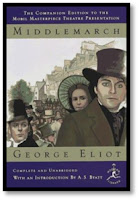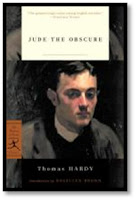'Tis the Season for ... New Year’s Resolutions
An apple a day keeps the doctor away, as the old adage goes. But did you know a classic a week makes our world look less bleak? By diving into the world of classic literature, we improve the quality of our minds, and our lives. The most beloved characters of the literary world teach us important life lessons as they cope with loss and hardships with admirable strength and fortitude. Of course, I am not suggesting you read the classics every time you pick up a book. But why not select a classic novel every now and then? The next time you find yourself browsing the library shelves looking for a good book to read, check out a timeless classic and enjoy a deeply satisfying read.
You may well ask, what is a classic? As wittily opined by Mark Twain, a classic is a book that everyone praises and one that nobody actually reads! The definition of a classic literary work, according to Merriam–Webster, is a book “serving as a standard of excellence: of recognized value.” When referring to the classics, I do not mean the literary works of classical antiquity. I define a classic as a book that not only informs and enlightens, but also one that enriches us, refines our sensibilities and stokes our passion; one that helps us understand the present by informing us of the past. Our personal library of classics may vary but the classics are definitely books that speak to us in a powerful and singular way; books that move us, with stories and characters that we can relate to and identify with even though the stories may be set in the 1800s, in Victorian England, in Paris during the French Revolution or in 17th century Boston, Massachusetts. For me, a classic is an outstanding work of literary value that endures the passage of time and one that appeals to generations of readers. Classics are books that can be read and reread and with every rereading some valuable nuggets may be gleaned that not only adds to the enjoyment of the book, but also increases our understanding of the world.
I have read George Eliot’s majestic and memorable novel Middlemarch: A Study in Provincial Life a few times now and with each rereading, the social and ethical lessons embedded in the story never fail to inspire me. The book is not a quick read by any means. Eliot weaves a cosmic web of irony and suspense in Middlemarch, of a community that is abounding with fully realized characters whose destinies are shaped as much by their individual will as by the community they reside in. While challenging, this classic is a must-read.
With marvelously detailed descriptions redolent of the period and incredibly rich stories with multifaceted characters, Thomas Hardy’s novels are replete with doomed characters, who in spite of all their good intentions, fail abysmally. Set in Victorian England, the characters suffer epic misfortunes as they battle hypocrisy, conformity, and social class—pitting their frail human wills against the all-powerful fate. Jude the Obscure, The Mayor of Casterbridge, Tess of the D’Urbvilles are all enthralling novels that will provide hours of enjoyable reading while simultaneously improving your social perception and emotional acumen.
The narrator of The Great Gatsby, Nick Carraway, is one of my favorite literary characters. From a fairly ordinary background in the Midwest, Nick is an educated person who comes to Long Island looking for work. He is a person of integrity with a strong moral conscience, who reinforces our notions of good and bad. Nick shines next to all the shallow, selfish and hypocritical characters that surround the eccentric millionaire Jay Gatsby. An evocative portrayal of the excesses of the Jazz Age, F. Scott Fitzgerald’s classic novel of the Roaring Twenties still resonates with its timeless message that money cannot buy you love, happiness or friends.
Meant to be worn as a badge of shame, the scarlet letter, “A,” is worn more as a badge of courage by Hester Prynne in Nathaniel Hawthorne’s The Scarlet Letter, a novel set in Puritan Boston. Hawthorne’s heroine is ostracized and penalized for committing adultery and bearing an illegitimate child, but Hester’s stoicism and fortitude in the face of social injustice makes her a remarkable character. Hawthorne’s classic novel explores timeless issues of guilt, remorse and redemption.
There are so many classics that are my personal favorites that I would like to share with you—Gustav Flaubert’s Madame Bovary; Charles Dickens’ A Tale of Two Cities and Great Expectations; Mark Twain’s Adventures of Huckleberry Finn—but they will just have to wait for another blog post. The sheer enjoyment, the pure pleasure, that I derive from reading a classic novel, how I get so engrossed in the book, swept up in the story, carried away by the characters, is…well, hard to explain. Give the classics a try and see for yourself. Now that you are no longer a teenager being forced to read these books for school, go ahead and check out a classic, or two, from your neighborhood Mercer County Library System and have an enjoyable and erudite New Year.
You may well ask, what is a classic? As wittily opined by Mark Twain, a classic is a book that everyone praises and one that nobody actually reads! The definition of a classic literary work, according to Merriam–Webster, is a book “serving as a standard of excellence: of recognized value.” When referring to the classics, I do not mean the literary works of classical antiquity. I define a classic as a book that not only informs and enlightens, but also one that enriches us, refines our sensibilities and stokes our passion; one that helps us understand the present by informing us of the past. Our personal library of classics may vary but the classics are definitely books that speak to us in a powerful and singular way; books that move us, with stories and characters that we can relate to and identify with even though the stories may be set in the 1800s, in Victorian England, in Paris during the French Revolution or in 17th century Boston, Massachusetts. For me, a classic is an outstanding work of literary value that endures the passage of time and one that appeals to generations of readers. Classics are books that can be read and reread and with every rereading some valuable nuggets may be gleaned that not only adds to the enjoyment of the book, but also increases our understanding of the world.
I have read George Eliot’s majestic and memorable novel Middlemarch: A Study in Provincial Life a few times now and with each rereading, the social and ethical lessons embedded in the story never fail to inspire me. The book is not a quick read by any means. Eliot weaves a cosmic web of irony and suspense in Middlemarch, of a community that is abounding with fully realized characters whose destinies are shaped as much by their individual will as by the community they reside in. While challenging, this classic is a must-read.
With marvelously detailed descriptions redolent of the period and incredibly rich stories with multifaceted characters, Thomas Hardy’s novels are replete with doomed characters, who in spite of all their good intentions, fail abysmally. Set in Victorian England, the characters suffer epic misfortunes as they battle hypocrisy, conformity, and social class—pitting their frail human wills against the all-powerful fate. Jude the Obscure, The Mayor of Casterbridge, Tess of the D’Urbvilles are all enthralling novels that will provide hours of enjoyable reading while simultaneously improving your social perception and emotional acumen.
The narrator of The Great Gatsby, Nick Carraway, is one of my favorite literary characters. From a fairly ordinary background in the Midwest, Nick is an educated person who comes to Long Island looking for work. He is a person of integrity with a strong moral conscience, who reinforces our notions of good and bad. Nick shines next to all the shallow, selfish and hypocritical characters that surround the eccentric millionaire Jay Gatsby. An evocative portrayal of the excesses of the Jazz Age, F. Scott Fitzgerald’s classic novel of the Roaring Twenties still resonates with its timeless message that money cannot buy you love, happiness or friends.
Meant to be worn as a badge of shame, the scarlet letter, “A,” is worn more as a badge of courage by Hester Prynne in Nathaniel Hawthorne’s The Scarlet Letter, a novel set in Puritan Boston. Hawthorne’s heroine is ostracized and penalized for committing adultery and bearing an illegitimate child, but Hester’s stoicism and fortitude in the face of social injustice makes her a remarkable character. Hawthorne’s classic novel explores timeless issues of guilt, remorse and redemption.
There are so many classics that are my personal favorites that I would like to share with you—Gustav Flaubert’s Madame Bovary; Charles Dickens’ A Tale of Two Cities and Great Expectations; Mark Twain’s Adventures of Huckleberry Finn—but they will just have to wait for another blog post. The sheer enjoyment, the pure pleasure, that I derive from reading a classic novel, how I get so engrossed in the book, swept up in the story, carried away by the characters, is…well, hard to explain. Give the classics a try and see for yourself. Now that you are no longer a teenager being forced to read these books for school, go ahead and check out a classic, or two, from your neighborhood Mercer County Library System and have an enjoyable and erudite New Year.
—Rina B.





Comments
Post a Comment